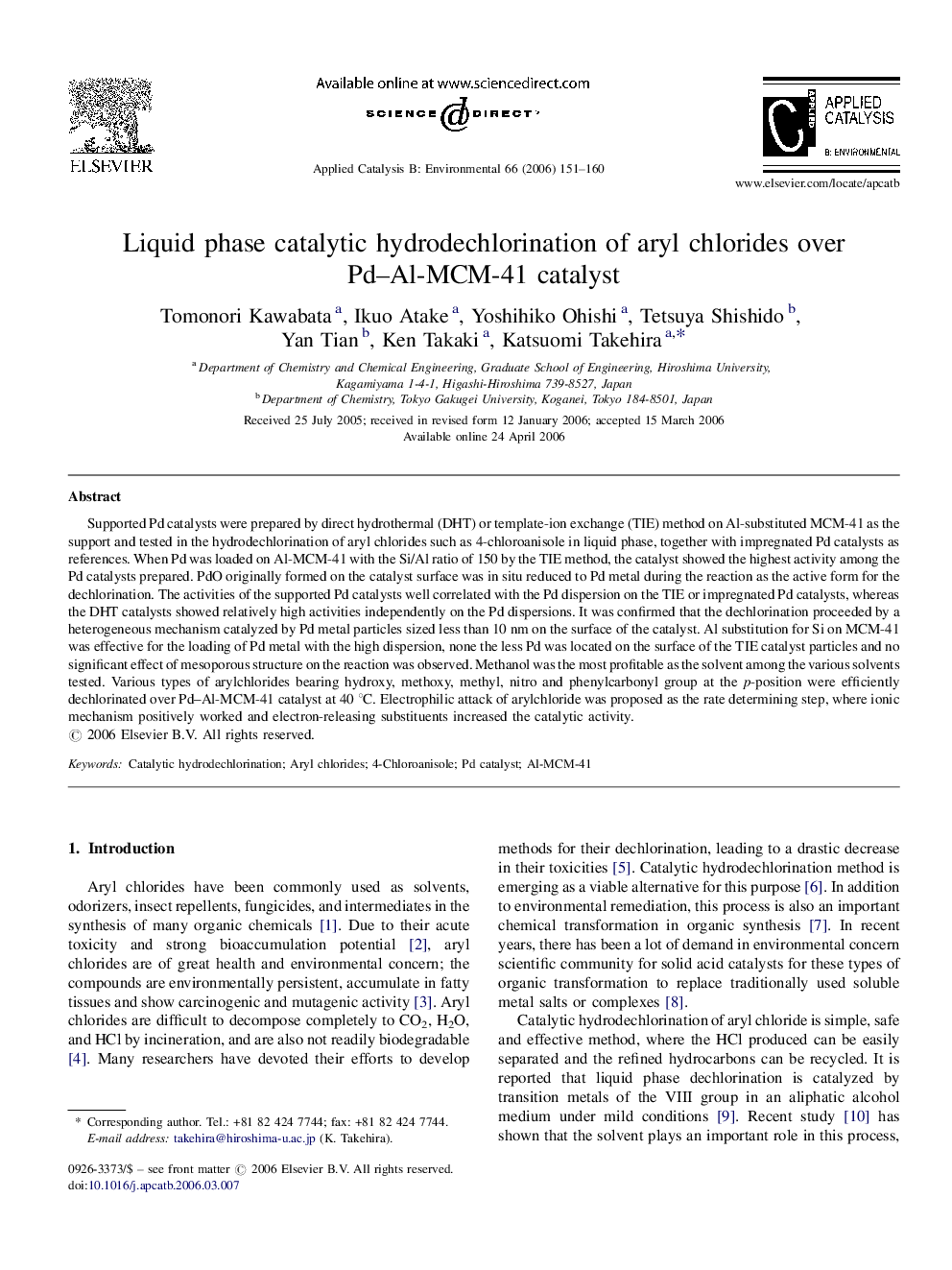| Article ID | Journal | Published Year | Pages | File Type |
|---|---|---|---|---|
| 49093 | Applied Catalysis B: Environmental | 2006 | 10 Pages |
Supported Pd catalysts were prepared by direct hydrothermal (DHT) or template-ion exchange (TIE) method on Al-substituted MCM-41 as the support and tested in the hydrodechlorination of aryl chlorides such as 4-chloroanisole in liquid phase, together with impregnated Pd catalysts as references. When Pd was loaded on Al-MCM-41 with the Si/Al ratio of 150 by the TIE method, the catalyst showed the highest activity among the Pd catalysts prepared. PdO originally formed on the catalyst surface was in situ reduced to Pd metal during the reaction as the active form for the dechlorination. The activities of the supported Pd catalysts well correlated with the Pd dispersion on the TIE or impregnated Pd catalysts, whereas the DHT catalysts showed relatively high activities independently on the Pd dispersions. It was confirmed that the dechlorination proceeded by a heterogeneous mechanism catalyzed by Pd metal particles sized less than 10 nm on the surface of the catalyst. Al substitution for Si on MCM-41 was effective for the loading of Pd metal with the high dispersion, none the less Pd was located on the surface of the TIE catalyst particles and no significant effect of mesoporous structure on the reaction was observed. Methanol was the most profitable as the solvent among the various solvents tested. Various types of arylchlorides bearing hydroxy, methoxy, methyl, nitro and phenylcarbonyl group at the p-position were efficiently dechlorinated over Pd–Al-MCM-41 catalyst at 40 °C. Electrophilic attack of arylchloride was proposed as the rate determining step, where ionic mechanism positively worked and electron-releasing substituents increased the catalytic activity.
